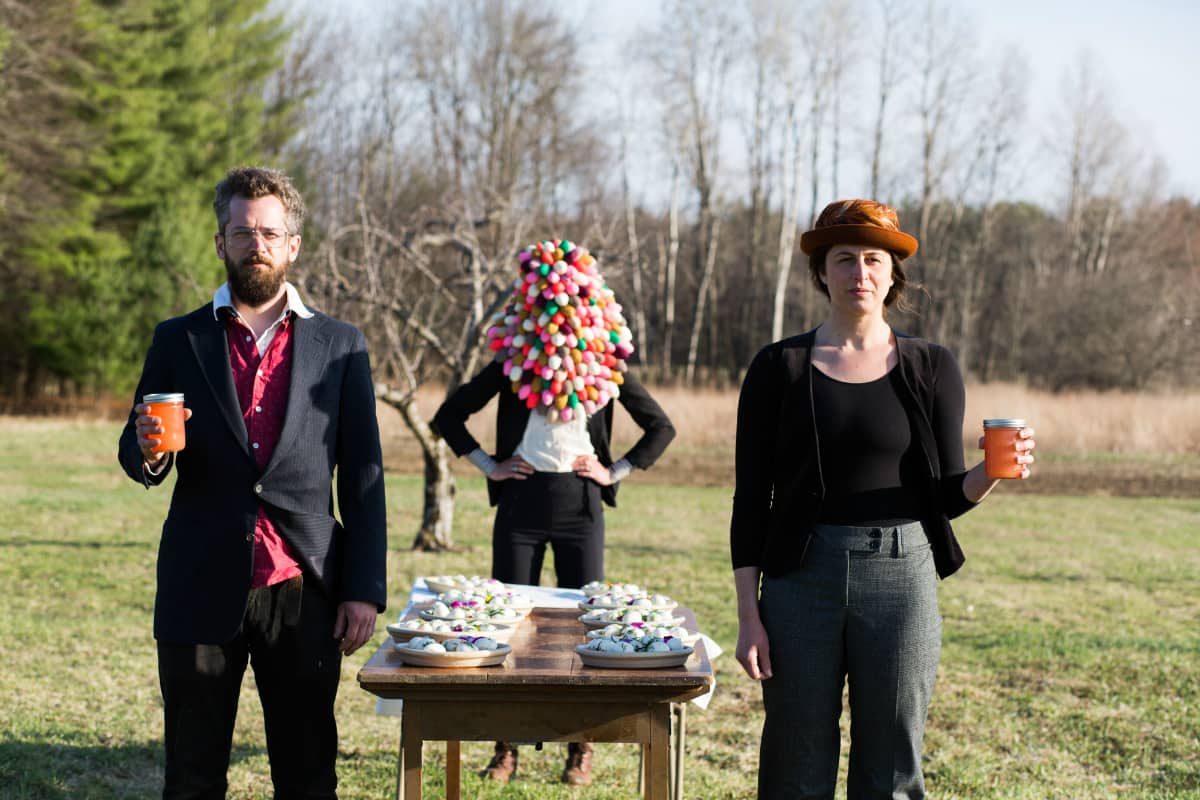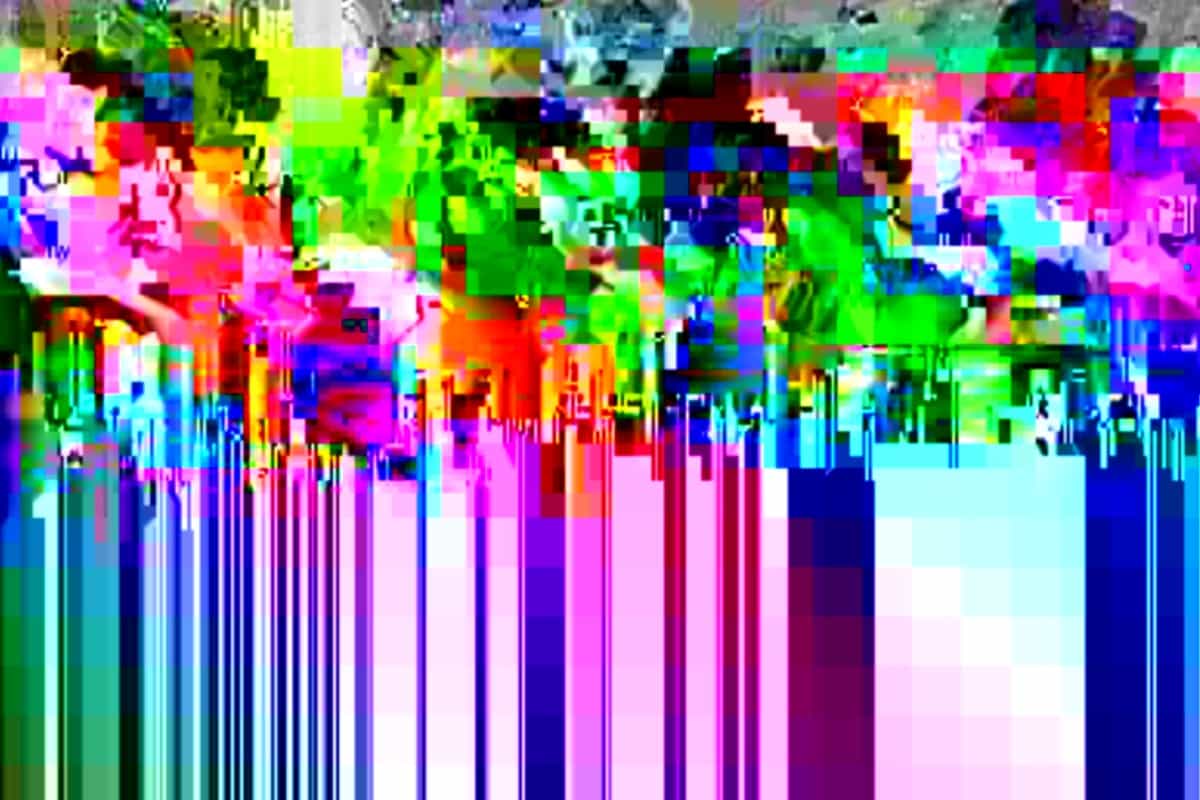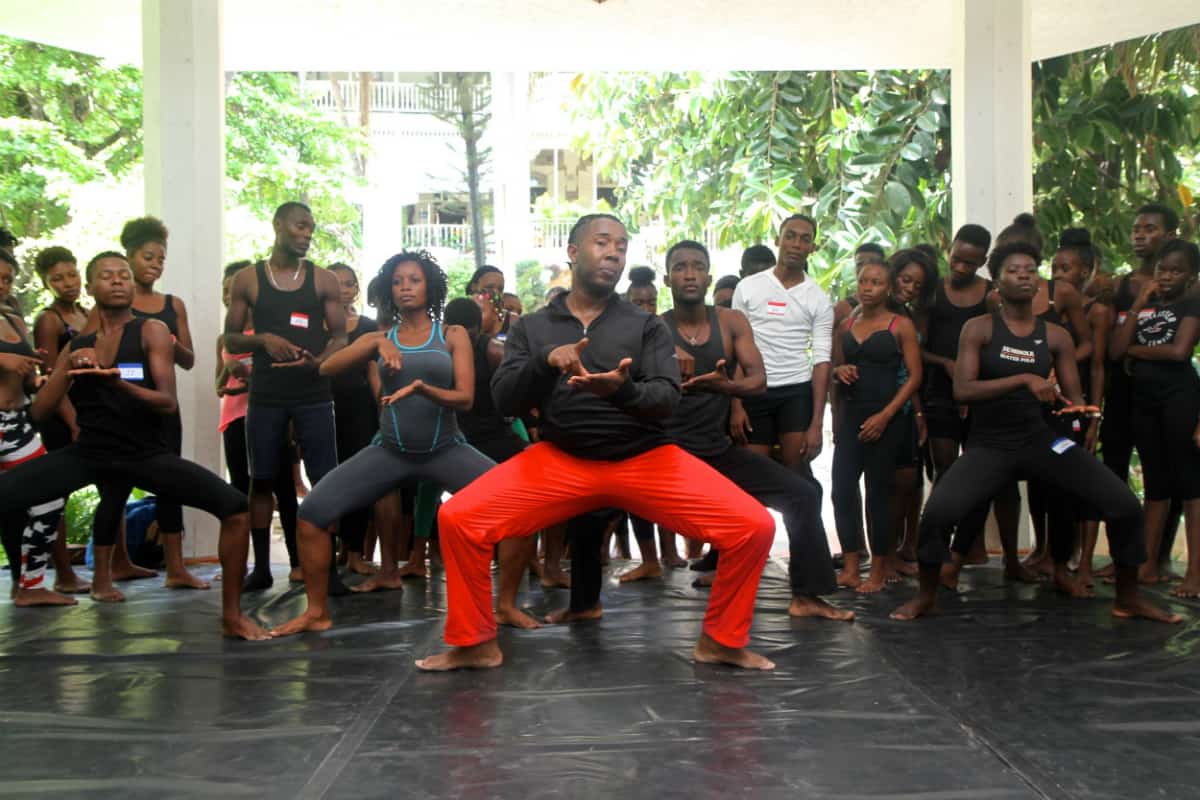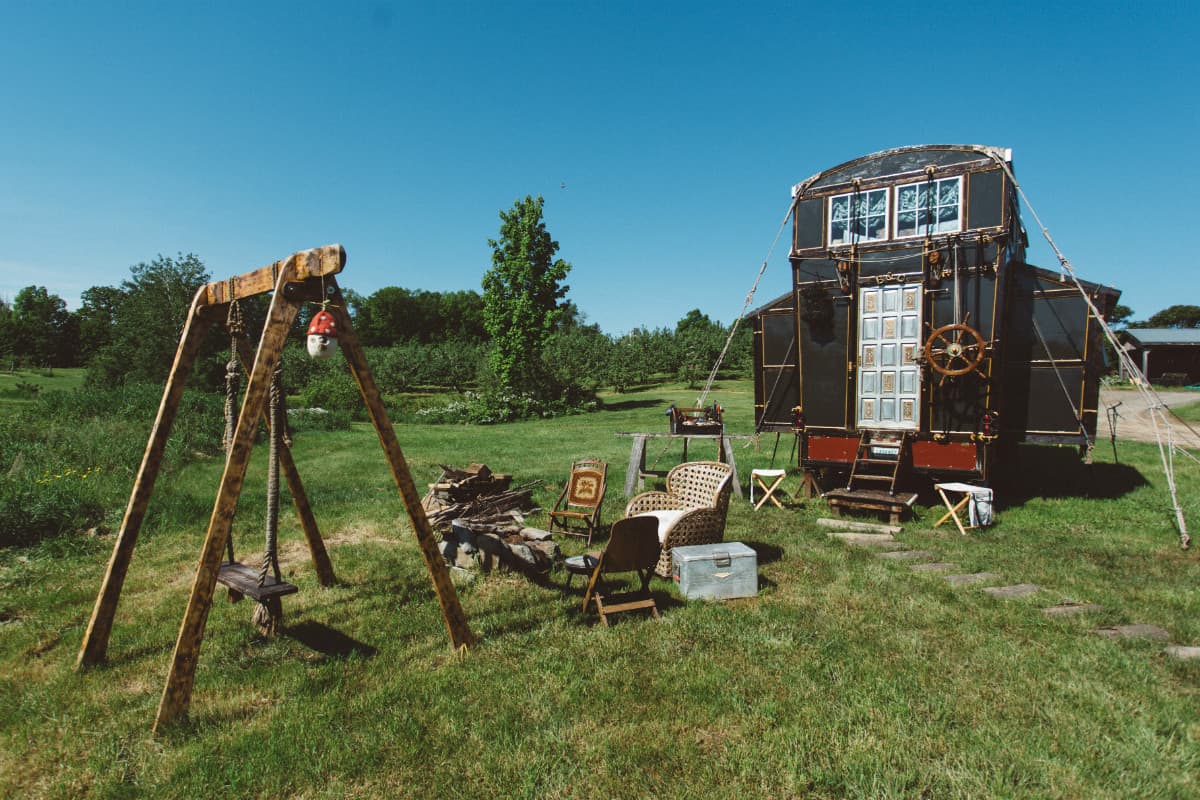Examining the indefinable art behind the ‘surrealist cabaret’ of the Royal Frog Ballet in Western Massachusetts.
It can be difficult to pin down the Royal Frog Ballet. Combining elements of dance, music, visual art, and live theater, it fits neatly in none of those categories. While it runs in the tradition of agitprop art, it is consciously apolitical. It might be easiest to think of Royal Frog Ballet as a waking dream, one that germinated in the collective unconscious of recent college graduates living together in an old house in Amherst, Massachusetts back in 2007, all with artistic mindsets and a shared interest in creating collaboratively.
The result for nine years and counting is the “surrealist cabaret,” an interactive, walkable performance set in the fields of western Massachusetts, punctuated by crisp autumn air, framed by the setting sun, and characterized by multiple takes in multiple media around a single unifying theme. Last year’s theme was “home,” a resonant, deeply personal concept that can be both comforting and dark. Members of the Royal Frog Ballet Corps scatter to do their various work and art for most of the year, but they trek back to the Pioneer Valley each fall to undertake large-scale performances and installations. Here are snapshots of some key members.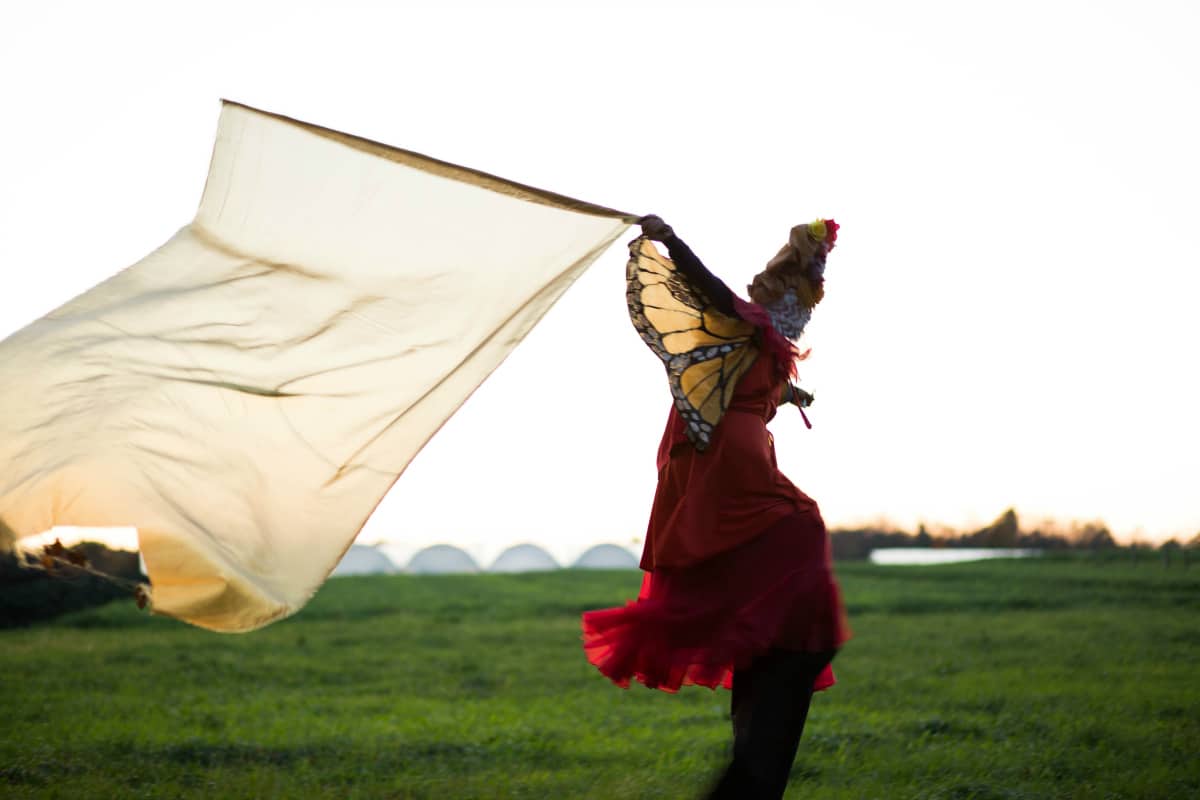
Sophie Wood
Wood studied theater for social change at Hampshire College, and the work she did then was overtly political. But around the same time that Wood began thinking about making art with her housemates, she had an epiphany. “Social change, those two words—social is one of them,” she says. “And dialogue is a huge part of how inclusive change happens. My hope is that this whole shebang is where artists can have conversations with each other, but it’s also happening with the audience.” Wood is acutely aware of how powerful art can be but doesn’t believe it has to be sharp-edged. In fact, at its most effective, its borders can blur. “I think there’s a softness about making things a little dreamlike. People can connect things.” For last year’s “home”—themed cabaret, installations included egg-based breakfasts and laundry hanging from a line—deceptively simple tropes meant to evoke losing home, not having a home, missing home. But there was no narrative, so audiences—and actors—were left to figure out what their subconscious was telling them. “You wake up and you’re like, ‘That didn’t make sense—but it all made perfect sense in your dream.’ ”
Julia Read
Read set the idea of “home” to music, writing a waltz. “The words were from the perspective of a house that missed the people that had lived in it,” she says. But she brought another piece to the cabaret as well, thinking about her mother who had passed away years prior. “I found a dress that was my mom’s—a beautiful long blue dress with flowers on it—and we hung it from a branch of a tree. I would go up to the dress and smell it, imagining my mom was inside it and what it would feel like to touch her and see her.” Then Annie Burdette and Molly Greene, two more members of the Corps, approached. “Annie came up behind me and took my shirt and began doing the same thing, except that my body was inhabiting my shirt, and Molly Greene came up and did the same to Annie’s shirt.” One didn’t need to know anyone’s backstory to sense the intimacy of the moment. “The audience was really quiet. I feel like it helps drop me into being present, having the audience nearby, to see people’s faces.” On any given night, Read may recognize some audience members, but not all—and she likes it that way. More than anything, she appreciates the precipice of performing. “I love the moments right before. As the audience is gathering, people are bundled up and chattering, and the light is usually dramatic. I love those moments. It sort of feels like we don’t know what will happen yet as we move into this world.”
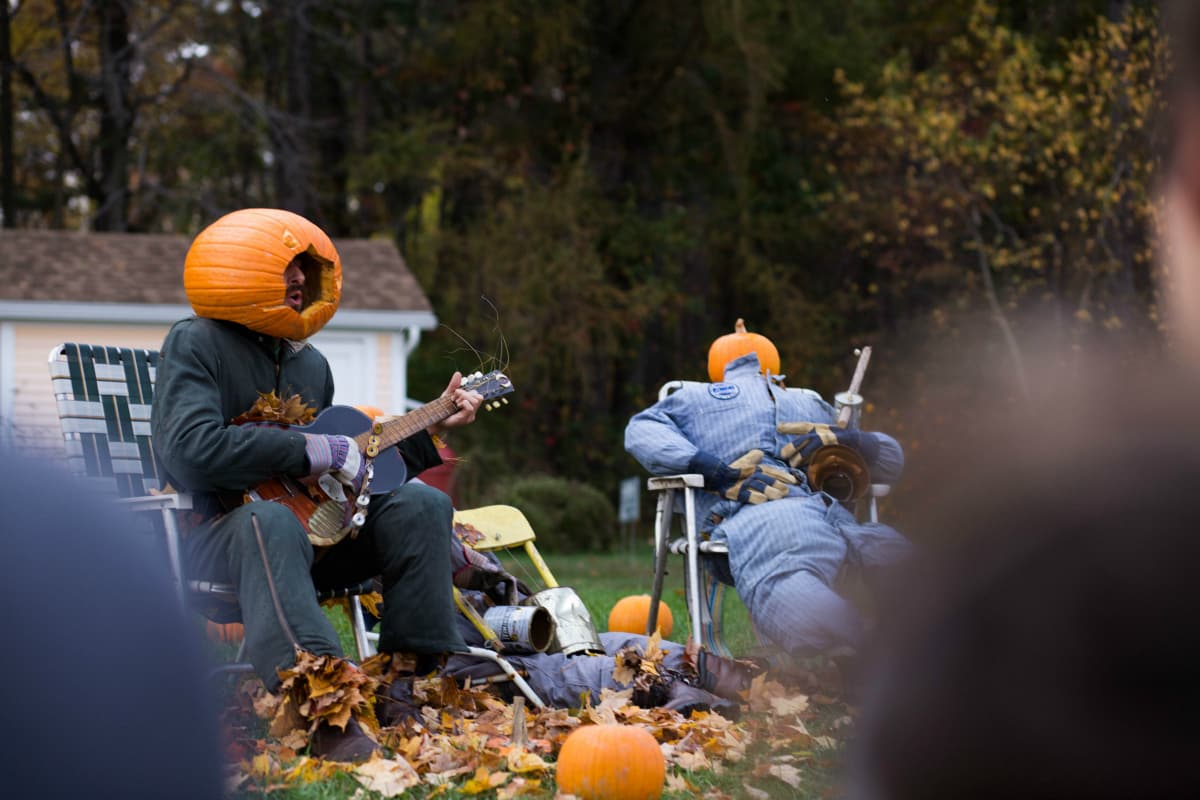
Chelsea Granger
Granger is up for almost any kind of project, but she’s most excited about the ones she undertakes with other people. This is not an accident. “My first few years [with RFB] it was hard to find my footing as a visual artist who makes smaller works on paper,” she says. “It took a while to understand what my work could be outside in a large field setting with big crowds.” But eventually she got it. Her project for “home” was truly collaborative—and truly huge, compared to the small-scale work she was used to. “I wanted to make a really big painting, a cantastoria, with Sophie.” A cantastoria, or “story-singer,” is an ancient melding of visual art and theater where a series of paintings are narrated by a live performer. “Eventually I made a huge painting of a vase of flowers, and Sophie wrote a prayer for flowers to go with it.” Because several members of the Corps had recently undergone loss and were processing grief in various ways, the prayer held special meaning. “It was about creating rituals, showing up for each other in the time and space. I wanted rituals, needed rituals.” Religious expression can be deeply personal, but many of the most powerful rituals happen in community—or collaboration. “I think that’s the thing. It’s not just your voice, your ideas, but your voice and ideas meeting someone else’s voice and ideas. Sitting alone in a room drawing is nothing compared to the alchemy that happens when people make things together.”
Jazer Giles
The natural, outdoor theater is central to the RFB experience, but Giles has fond memories of a rare indoor moment: a monthlong installation at the APE Gallery in Northampton, Massachusetts, when the troupe created a boat-shaped stage in the space. “We spent most of the time building it,” says Giles. About a week before the show, they realized they still needed to come up with a performance. “I had built an artist posing figure, a puppet that mimicked my movement, and I hooked up to it with four coat hangers attached to my limbs with leather straps. I built a small bird outfit for him, and we made this event happen out of the ether.” Some performers might have been daunted, but Giles is less attached to the outcome, more interested in the process. “You’re always pulling art out of the air.” With its outdoor performances, RFB is “harnessing the magic of the place, distilling it, setting it up in a certain way—or just framing it. Of course, sometimes it rains. Often it’s freezing! But you can’t fake things like space. When you put people out in a field, 50 feet away from people, and put them in costumes, you can’t translate that to an inside space with a stage.”
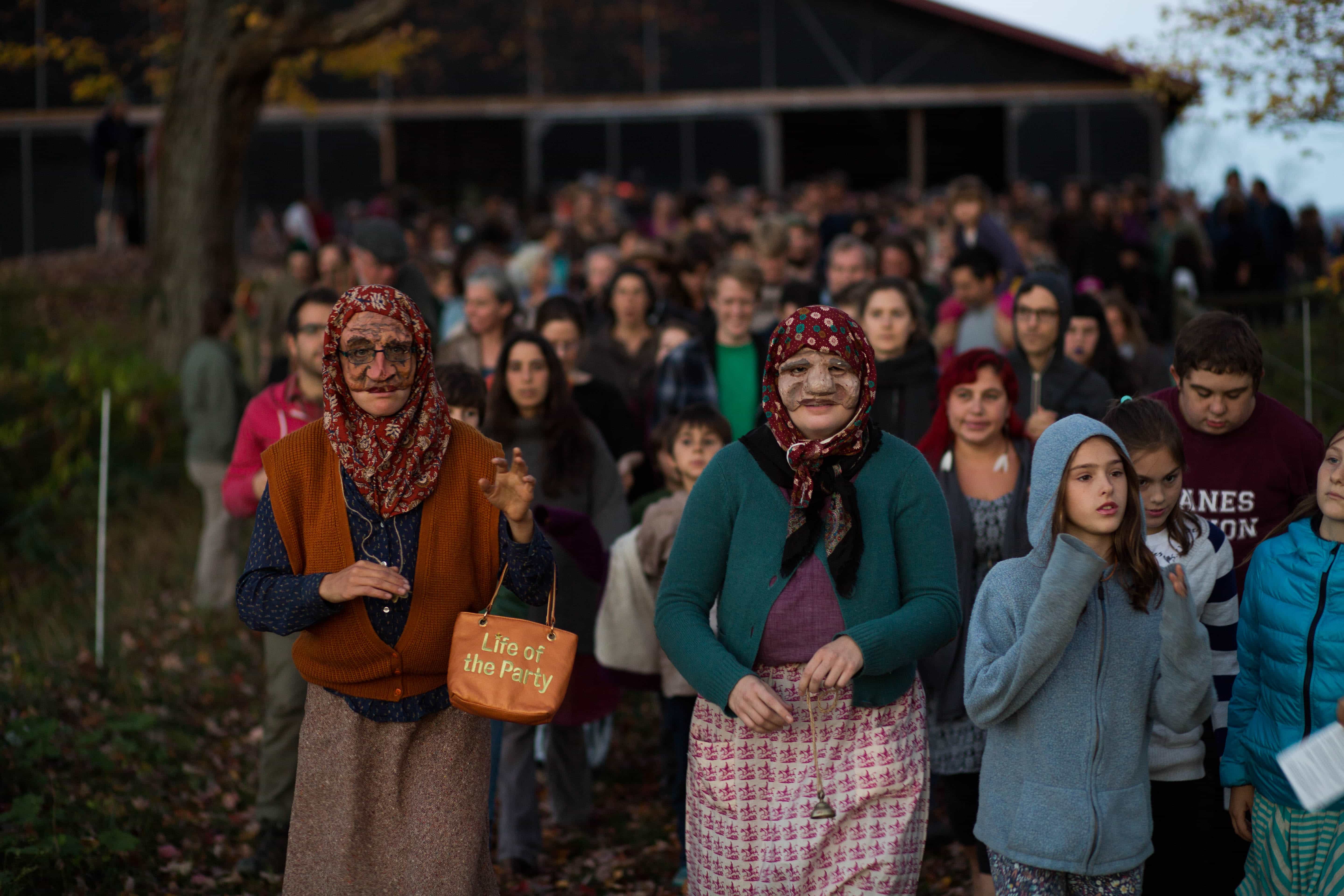
Mike Gundlach
Gundlach began as the mess cook for the Corps, but he quickly found his role morphing. “Sophie asked me to collaborate to make an outdoor-feast show. The food was interspersed with two or three acts in between each course of people popping out of the ground and having dinner.” After that, Gundlach was both company cook and performer, and has been contributing edible art ever since. “We’ve made a pepper-infused, chocolate-covered asparagus as an aphrodisiac course that was served on spires. We’ve hung Turkish delight from trees for people to pick and eat,” he recalls. “Molly and I performed a piece with soft-boiled eggs and volkenbrat, this German rye bread that people would make in the fall and survive on all winter.” They garnished the peasant food with chives and edible flowers, then dumped freshly squeezed grapefruit juice on top and served [the dish] in small planter trays. “For one show we had a bunch of rain and made pizza in the rain. We just figured it out,” he shrugs. “If people can see you be excited, you get that energy.”
Molly Greene
In her other life, Greene is completing a PhD at Yale University in American studies—an interdisciplinary field that explores how elements in society intersect. One could argue that RFB does the same. “The themes of the cabaret are always threads that weave in and out of aspects of our lives,” Greene muses. “Sometimes they congeal into a single idea, but usually it’s a constellation of terms that connect, then get kind of carried off in various trajectories, then get rewoven into something we hope is coherent.” Greene’s printmaking work is solitary and quiet. “I’m kind of a hermit. Being in front of people performing . . . there’s a little bit of tension in it for me, but it’s also rich and nourishing. One of my favorite moments is when we’re literally hiding in a ditch somewhere as your next costume is being assembled or whatever, and the sky is doing something incredible, and it’s fall in New England. You’re listening with one ear for your cue, but you’re also just conscious of being outside, and there’s a heightened sense of purpose and consciousness and collective awareness of just being in that place. I have that moment every year, and it is always all-consuming.”
This story originally appeared in the June/July 2016 issue of Take, which is available here.

